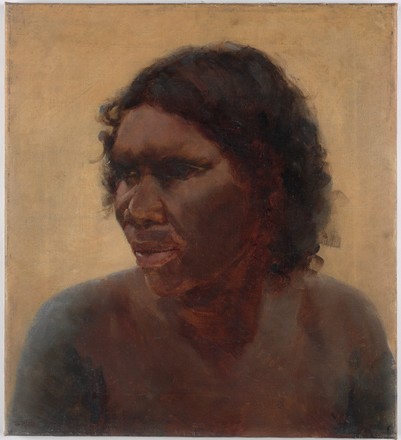
Maria Yulgilbar
c1895
Oil on canvas
Bequest of Sir William Dixson, 1943
DG 319
Oil on canvas
Bequest of Sir William Dixson, 1943
DG 319
Tom Roberts is best known as a landscape painter, but much of his income came from portraits. Most were commissions, the bread and butter work of a professional artist. ‘One had to make a living, as a 1st job, + so t’was portraiture for that + I did ‘em’ [1].
As early as 1887 he was mocking such work with the ditty:
I’ve painted kids in every pose,
A’kissing their mammie or smelling a rose,
I’ve painted ‘em in the nurse’s lap,
And in the cradle sucking pap. [2]
At the same time, Roberts’ interest in painting portraits of Aboriginal people was very much informed by his belief that he was recording an endangered race. His passionate belief in the righteousness of the British Empire and race meant that while he rendered many of his Aboriginal sitters with great humanity – Maria Yulgilbar is a beautifully executed and sophisticated example – he also saw his Aboriginal portraits as historical works of anthropological importance.


 Back to list
Back to list